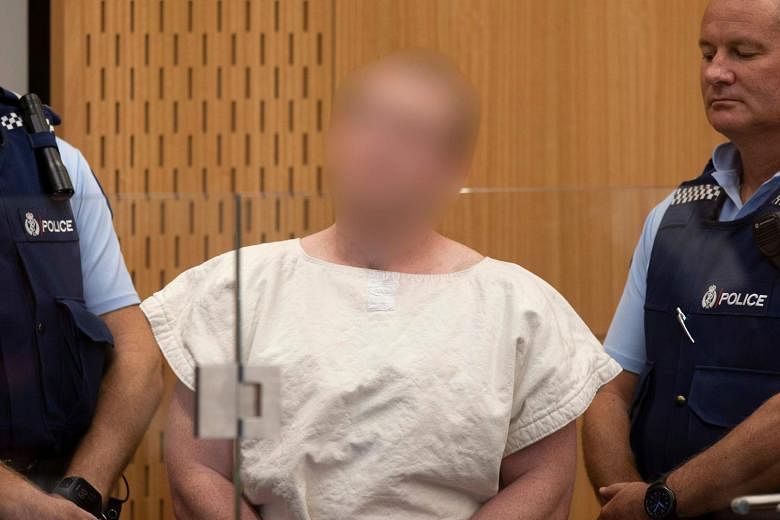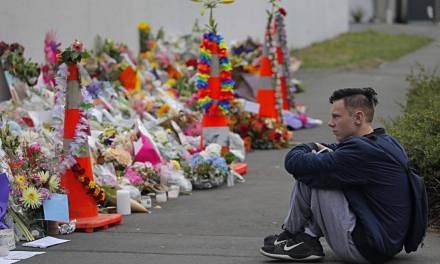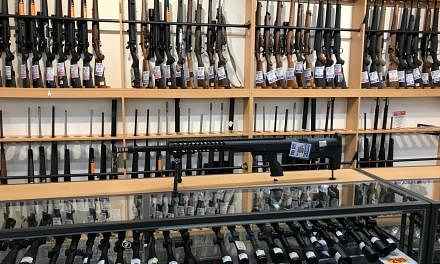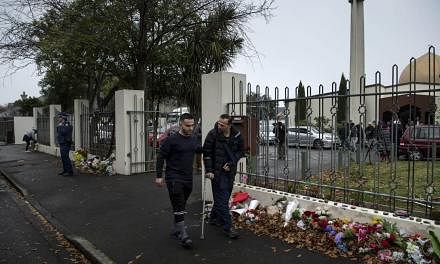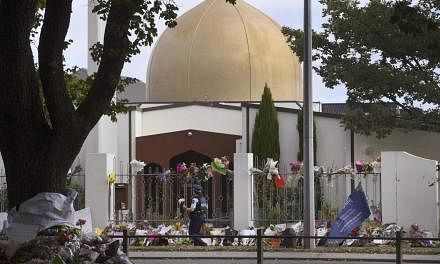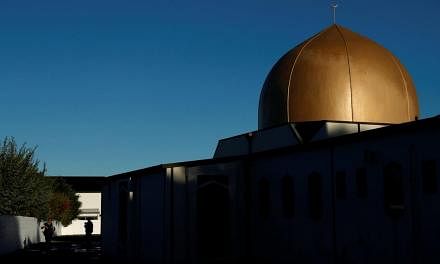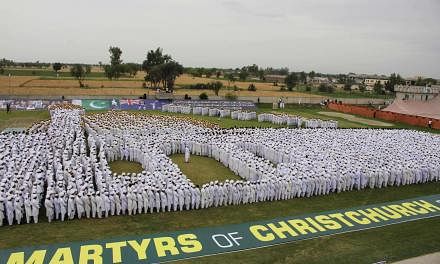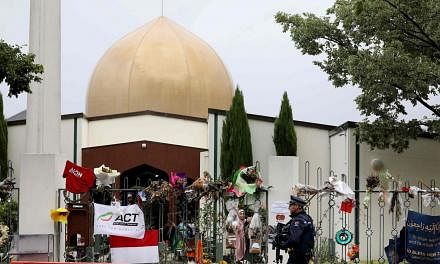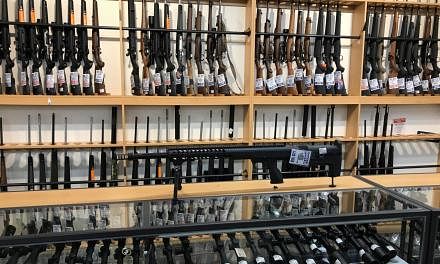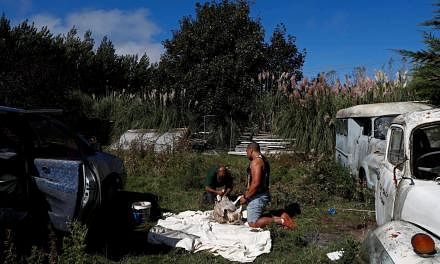CHRISTCHURCH (WASHINGTON POST) - The alleged shooter in the New Zealand mosque massacre was a globe-trotting young Australian and avowed racist who immersed himself in an Internet subculture of extreme anti-immigrant, anti-Muslim, white supremacist ideology.
Brenton Harrison Tarrant, 28, was captured and arrested Friday in Christchurch, where he is alleged to have shot and killed 49 people in terrorist attacks on two mosques a few kilometres apart. He was charged with murder and appeared in court on Saturday.
Tarrant had no criminal record and was not previously known to investigators who follow extremist groups.
Australia's Prime Minister said authorities were investigating a detailed, lurid guide to Tarrant's plans, ideas and inspirations, a 74-page manifesto that was left behind after the attack and on a Twitter account Tarrant created three days before the shootings.
The account had zero followers until after Tarrant's name circulated after Friday's assault.
The alleged shooter wanted the world to see what he'd done: He apparently posted links on Facebook that connected to live video of the massacre from a camera mounted on his body.
The video showed unspeakable slaughter as the shooter moved through the house of worship, saying nothing, shooting as many people as he could.
The manifesto indicates that he moved to New Zealand to stage his attack, which he had been planning for two years.
His aim, he said, was to defend "our lands" from "invaders", to "reduce immigration rates" and to deepen division and start a civil war in the United States.
After his father died in 2011, Tarrant, a former fitness trainer who gave free lessons to children in the Australian town where he grew up, spent several years travelling around the world, to places where a white Australian was a distinct minority and a white supremacist was surrounded by people he considered lesser.
He visited Pakistan and North Korea, where he was photographed in a group tour of a national monument.
In a Facebook message, Tarrant called Pakistan "an incredible place filled with the most earnest, kind-hearted and hospitable people in the world".
Yet Tarrant declared himself a "racist" and "ethno-nationalist eco-fascist" in his manifesto, a compendium of slogans, poems and diatribes against immigrants, Muslims, Jews and religious converts.
He said Communist China was the nation with "political and social values" closest to his.
Tarrant, who described himself as "a regular white man, from a regular family", said he did not hate foreigners or Muslims who lived in their "homelands".
"I spent many years travelling through many, many nations," he wrote. "I was treated wonderfully... The varied cultures of the world greeted me with warmth and compassion."
But he said immigrants were "invaders... who colonise other peoples lands."
Tarrant, who according to London's Independent newspaper met with right-wing extremists during a visit to Europe in 2017, declared allegiance to a group he called Europeans.
The weapons the shooter carried were covered with the names of men who murdered Jews and Muslims in Europe.
"The origins of my language is European, my culture is European, my political beliefs are European, my philosophical beliefs are European, my identity is European and, most importantly, my blood is European," he wrote.
He had little affection for his native country: "What is an Australian but a drunk European?"

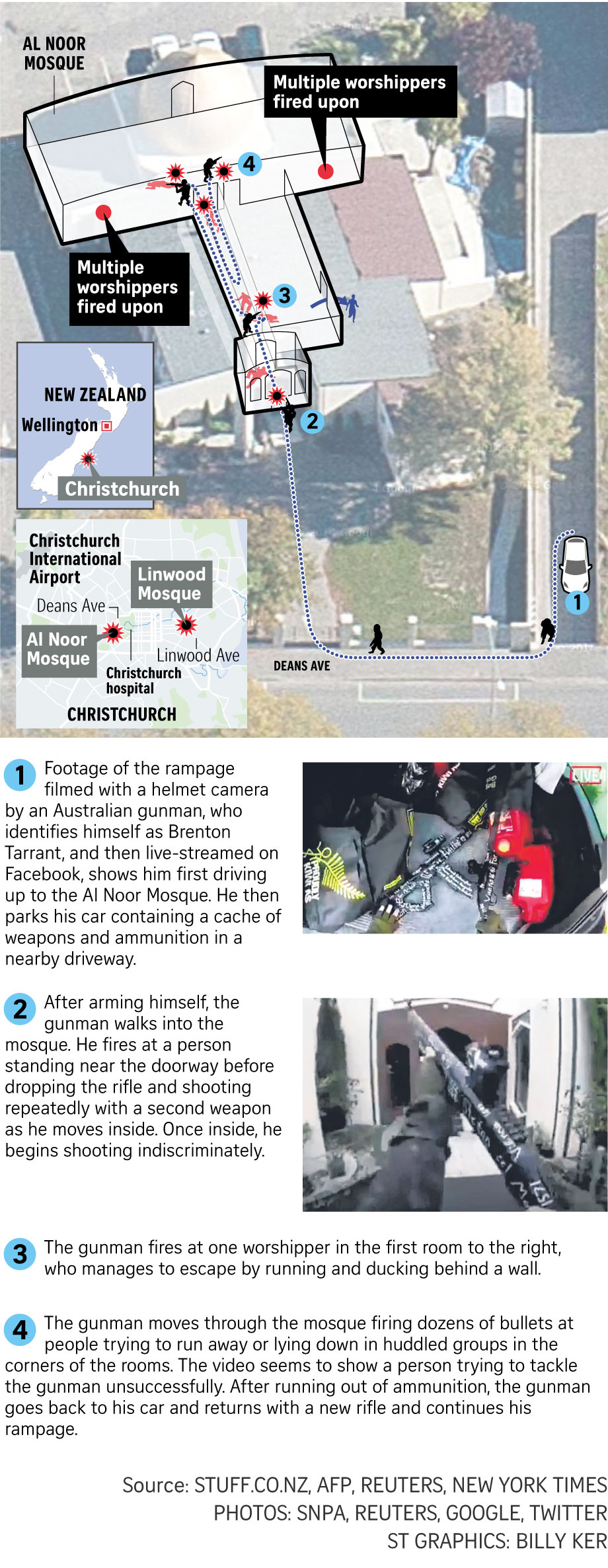
In his tweets - which Twitter deleted - and manifesto, Tarrant demonstrated a distanced nonchalance about the carnage he was planning.
A tweet saying, "Soviet and American troops meeting in Berlin 1945" linked to a Sponge Bob Square Pants video of cartoon characters in a burning city.
Another tweet links to video of attack helicopters shooting at what appears to be a Middle Eastern town.
Tarrant added this label: "Coming soon to an immigrant suburb near you."
In his manifesto, he seems desperate about the future. "Why won't somebody do something?" he asked over and over in all-capital letters.
He concluded with this: "Why don't I do something?"
He decided, he wrote, to "commit to force. To commit to violence."
More than perhaps any other mass shooter in recent times, the author of this manifesto spells out the roots of his extremism in detail.
He said he was inspired by the British fascist Oswald Mosley and by other mass shooters, such as Norwegian murderer Anders Breivik and Dylann Roof, who murdered nine African Americans in a Bible study class in Charleston, South Carolina, in 2015.
Tarrant claimed he contacted an anti-immigration group called the reborn Knights Templar and got a blessing for the attack from Breivik, a right-wing extremist who killed 77 people in Oslo and a nearby island in 2011.
Breivik's lawyer, Mr Oeystein Storrvik, told Norway's VG newspaper that his client, who is in prison, has "very limited contacts with the surrounding world, so it seems very unlikely that he has had contact" with the alleged New Zealand gunman.
The manifesto quotes from poets Dylan Thomas and Rudyard Kipling.
He rails against "nihilistic and degenerate pop icons" such as Michael Jackson, Madonna and Freddie Mercury.
But he also toys with his readers.
At times, he is clearly spoofing: Asking himself if video games inspired his violence, he wrote, "Spyro the Dragon 3 taught me ethno-nationalism. Fortnite trained me to be a killer."
In the manifesto, the line between self-revelation and trolling is never straight."From where did you receive/research/develop your beliefs?" he asks.
"The Internet, of course," he answers. "You will not find the truth anywhere else."
His world view seems cobbled together from scraps he found on the web, and other details about his life indicate that he was deeply involved in online subcultures that attract extremists of various sorts.
News accounts in Australia said Tarrant told acquaintances that he funded his travels by making money from Bitconnect, a cryptocurrency similar to bitcoin.
Organised white supremacists, some of whom are banned from using PayPal and other major digital pay systems, often trade advice online about using cryptocurrencies that promise complete anonymity in transactions.
Some of the extremists avoid using banks because they believe florid conspiracy theories in which Jews control international banking.
But Tarrant also mentioned in social media posts that he had been living off money he inherited after his father, Rodney, who worked as a garbageman and was a competitive triathlete, died in 2010.
Tarrant grew up in Grafton, a small town near Australia's south-east coast, south of Brisbane.
He said in the manifesto that his was a "working class, low income family".
During and after high school, Tarrant worked at a gym in his hometown. His former boss there, Mr Tracey Gray, told a Sydney TV station that Tarrant "never showed any extremist views or any, you know, crazy behaviour".
The alleged shooter, like many mass murderers in recent years, appears to have studied his predecessors, copying moves that promised either to heighten the death toll or the sensationalism of the slaughter.
Once again, a white supremacist chose to attack a minority group, again choosing a "soft target", a house of worship.
But unlike some recent mass shooters who sought to become famous, Tarrant claimed that he expected to "be forgotten quickly. Which I do not mind."
"After all," he wrote, "I am a private and mostly introverted person."
Once again, the shooter wore tactical gear, adopting the identity of what academic researchers call a pseudo-commando.
Theatricality has been a regular feature in these explosions of mayhem; in 1999, the two shooters at Columbine High School in Colorado wore black trench coats and fantasised that their massacre would be recreated on film by director Quentin Tarantino.
Once again, there was a desperate narcissism to the massacre, a cry for attention by someone whose life appeared to be without distinction or social success.
Tarrant planned not only the two-site murder rampage but also the manifesto and a social media campaign, which included his newly created Twitter account, full of links to white supremacist and anti-immigration postings.
He created a musical soundtrack to his attack, curating martial music from Russia, Serbia and Britain.
The shooter's focus on streaming his attack on social media echoed the 2015 murder on live television of two journalists in Roanoke, Virginia. A disgruntled former TV station employee shot the journalists during a live interview and filmed the murders with his phone.
He quickly posted on Twitter, "I filmed the shooting see Facebook."
A year earlier, a gunman in Santa Barbara who hated women and minorities uploaded to YouTube a video in which he described his upcoming massacre.
In the manifesto, Tarrant posed a series of questions to himself."Were/are you a supporter of Donald Trump?" the author of the manifesto wrote.
The reply: "As a symbol of renewed white identity and common purpose? Sure. As a policymaker and leader? Dear God, no."
Was this a terrorist attack? "Yes," he wrote, "it is a terrorist attack."
"Do you feel any remorse for the attack?"
"No, I only wish I could have killed more invaders, and more traitors as well."
